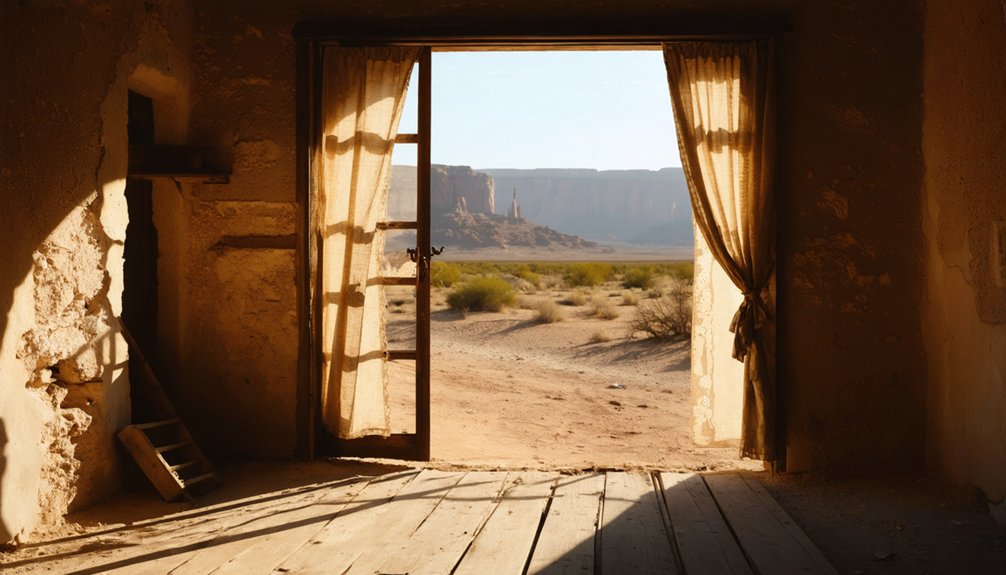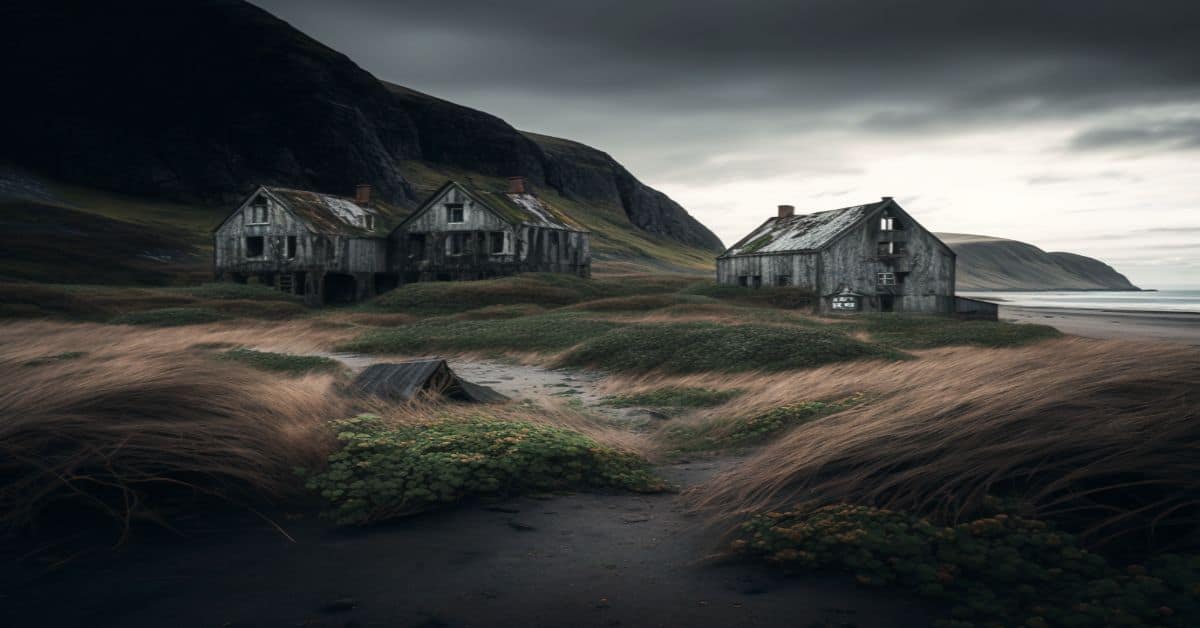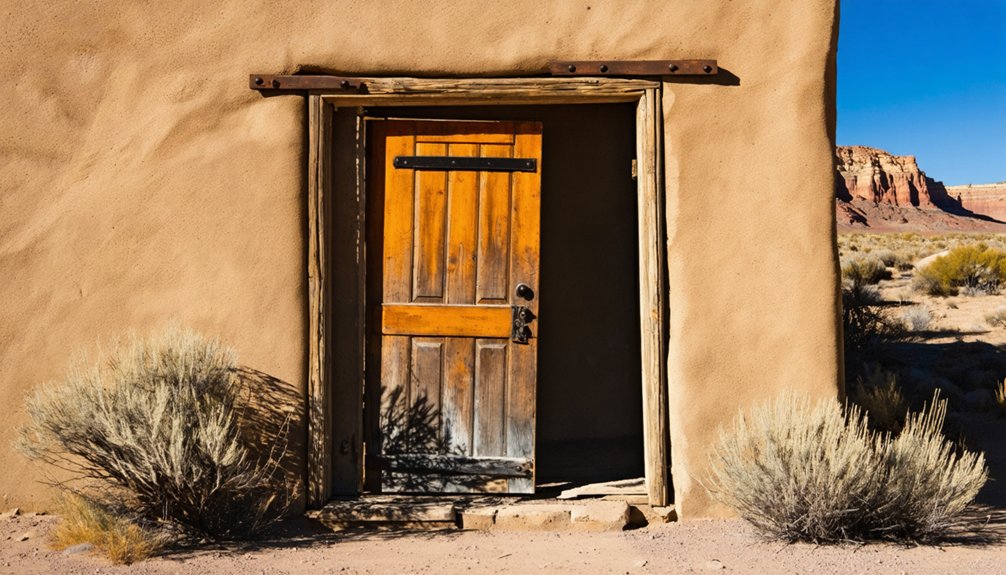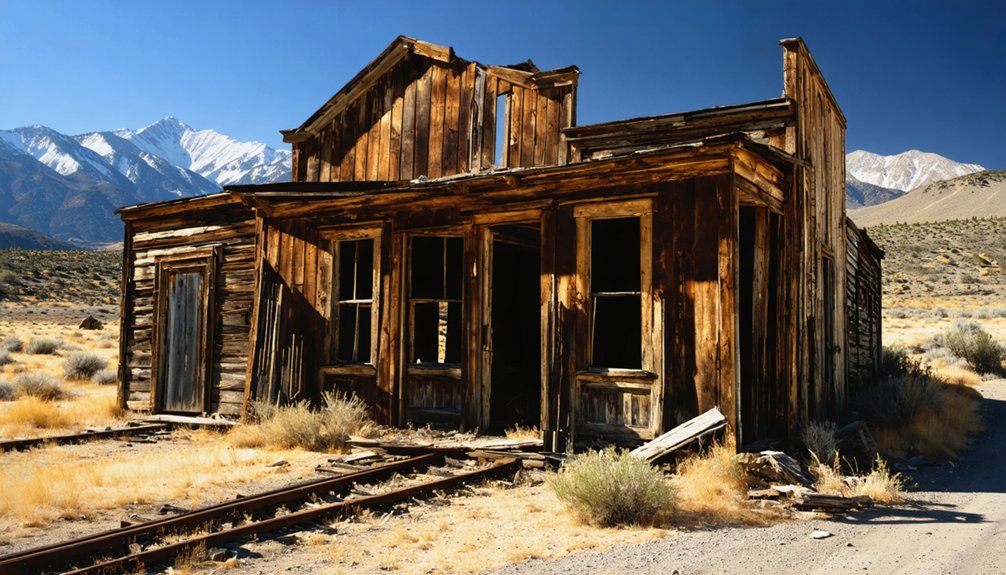You’ll find Royal’s stone ruins in Carbon County, Utah, where a thriving coal mining settlement operated from the late 1800s until the 1950s. Originally called Bear Canyon, then Cameron, the town became Royal in the 1920s under the Royal Coal Company’s ownership. The site produced up to 12,000 tons of coal monthly, supported by immigrant workers from 33 countries and the Denver & Rio Grande Western Railroad. The town’s rich multicultural history and mining legacy await your exploration.
Key Takeaways
- Royal, Utah began as a coal mining town in the late 1800s, changing names from Bear Canyon to Cameron before becoming Royal in the 1920s.
- The town flourished under Henry Rolapp’s ownership in 1917, featuring amenities like a school and hospital for mining families.
- At its peak, Royal’s mines produced 12,000 tons of coal monthly, transported via the Denver & Rio Grande Western Railroad.
- Multiple ownership changes and declining coal production after World War I led to the town’s eventual abandonment in the 1950s.
- Today, Royal exists as a ghost town with only stone walls remaining, though its immigrant history lives through Helen Papanikolas’s literary works.
The Rise of a Coal Mining Settlement
As Utah’s coal industry gained momentum in the late 1800s, the establishment of Royal emerged from the ambitious expansion of mining operations throughout the state’s resource-rich regions.
You’ll find Royal’s origins tied to the Denver & Rio Grande Western Railroad’s strategic control of Utah’s coal belt, which revolutionized coal transport and market access. The railroad recruited foreign labor agents to bring diverse workers to the mines. The 1883 Scofield disturbance marked one of the earliest labor conflicts in the region.
Originally known as Bear Canyon, the settlement transformed through multiple ownership changes – from Cameron to Rolapp, and finally to Royal in 1914.
The community dynamics reflected the era’s complex labor struggles, with immigrant workers from Europe, Asia, and Mexico forming the backbone of the workforce.
Royal’s mines, reaching depths of 1,000 feet with challenging 35% grades, produced highly sought-after hard coal, yielding 250 tons daily while workers confronted issues of fair pay and safety conditions.
From Bear Canyon to Royal: A Story of Names
The evolution of Royal’s name mirrors the changing hands of power and ownership that shaped this Utah mining settlement.
A town’s name changes reveal its journey, tracking shifts in power as new owners reshape the community’s identity.
You’ll find that each name alteration reflected a distinct phase in the community’s development: Bear Canyon represented the natural settlement period, while Cameron marked the beginning of corporate control in 1913 under Frank Cameron’s small mining operation.
When Henry Rolapp purchased the town in 1917, the community identity shifted again, expanding with new amenities like a school and hospital.
The final transformation came in the 1920s when Royal Coal Company took ownership. Much like how order of succession determines leadership in monarchies, the town’s identity evolved with each new owner.
Though the mine was later sold to Spring Canyon Coal Company in 1930, the name Royal stuck, representing the town’s mature phase with its established infrastructure and thriving coal industry. The town’s development continued until it became a ghost town by the late 1950s.
Life in Early 1900s Carbon County
Life in early 1900s Carbon County centered around a vibrant tapestry of immigrant communities drawn to Utah’s burgeoning coal industry. You’d find workers from 33 different countries, with Greeks being particularly numerous – in 1910, there were four times more Greeks in the county than Price’s total population.
Immigrant experiences varied dramatically between mining towns and larger settlements. In company towns like Kenilworth, where 60% of residents were foreign-born, you’d live in company-owned housing and shop at company stores. The Greek Orthodox Church served as a cultural cornerstone for the Hellenic community when it was established in Price in 1915. The Finnish immigrants maintained their cultural identity by gathering in their own community hall for social events.
Community resilience emerged through shared hardships – families supported each other through mine accidents, labor strikes, and economic challenges. Despite difficult conditions, including limited education and hazardous work, immigrants built strong cultural bonds through religious institutions, social gatherings, and sports, particularly baseball.
Mining Operations and Railroad Connection
You’ll find that Royal’s underground mining operations relied heavily on room-and-pillar extraction methods to access the rich coal seams nestled within Bear Canyon.
The Denver and Rio Grande Western Railroad’s strategic rail lines, constructed between 1881-1883, provided Royal Coal Company with essential transportation infrastructure to move their coal to market. Competition between various railroad companies spurred transportation expansion throughout Utah’s mining regions.
This rail connection transformed Royal from an isolated mining camp into a commercially viable operation, enabling the transport of high-grade coking coal to industrial centers and railroad companies throughout the region. By 1921, the mine achieved an impressive 1,000 tons daily output.
Underground Mining Techniques
Royal’s underground coal mining operations centered on extensive shaft networks beneath Price Canyon, ranking among Utah’s deepest mines during the early 20th century.
You’ll find that coal extraction methods relied heavily on manual labor, supported by early mechanical tools that miners used to cut through deep seams. The mining techniques reflected the era’s technological limitations, requiring strategic tunnel development and careful timbering to prevent cave-ins. Like the royal sails on ships that helped navigate treacherous waters, the mine’s sophisticated support systems helped guide workers safely through the underground passages.
To maintain safety in these deep shafts, you’d have seen thorough ventilation systems that were critical for providing fresh air and reducing explosion risks from coal dust and gases. Thirty-seven miners lost their lives in accidents during the mine’s operation from 1914 to 1957.
The mine’s infrastructure demanded continuous monitoring and maintenance, especially given the complex network of tunnels that supported Royal’s significant coal production of 12,000 tons per month during peak operations.
Rail Transport Infrastructure
Moving coal from the mine shafts to distant markets required an extensive rail network, with the Denver & Rio Grande Western Railroad serving as the primary transportation artery for Royal’s operations.
You’ll find the rail line importance reflected in the town’s impressive coal shipments, reaching 12,000 tons monthly by 1918. The freight transport infrastructure included essential loading facilities and sidings to handle the constant flow of coal trains.
As ownership changed from Cameron Coal Company to Royal Coal Sales Agency, and later to Spring Canyon Coal Company, the rail facilities adapted accordingly.
The local station’s renaming to Royal in 1936 marked the Royal Coal Company’s dominance in the region. This crucial transportation link remained operational until the mine’s closure in the 1950s.
Notable Residents and Cultural Heritage
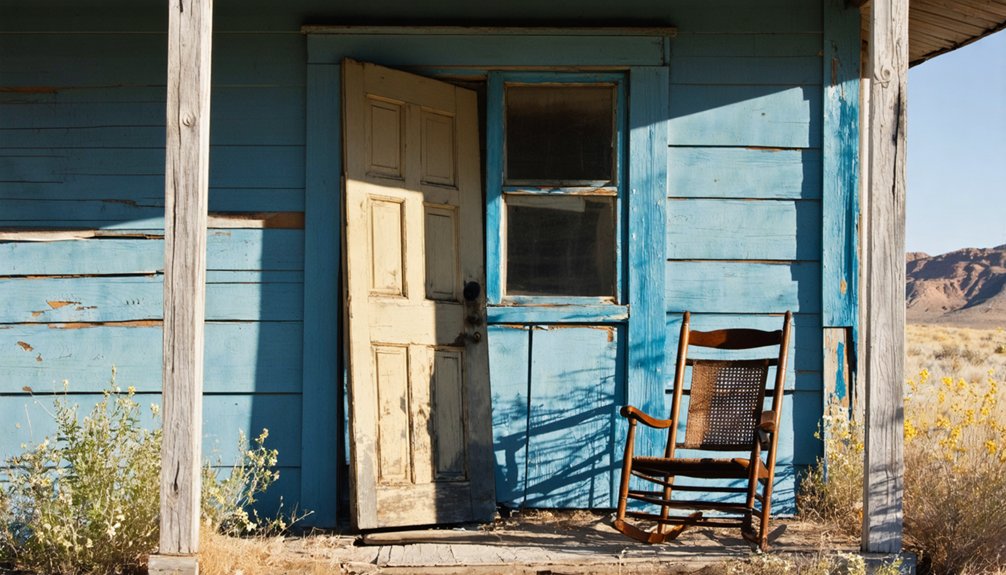
Among Royal’s most prominent figures, historian Helen Z. Papanikolas, born in 1917, captured the immigrant experience and working-class struggles through her influential writings about Utah’s mining communities.
You’ll find her detailed accounts of Royal’s diverse ethnic groups, including European and Asian laborers who shaped the cultural fabric of this company town, preserved in historical records and personal narratives.
Her work provides critical insights into how mining families maintained their traditions and formed tight-knit communities while adapting to the harsh realities of early 20th-century coal town life.
Helen Papanikolas: Literary Legacy
Helen Papanikolas stands as one of Royal’s most significant literary figures, having chronicled the rich tapestry of immigrant life in Utah’s coal mining communities. Born in Royal (then Cameron) in 1917, she devoted her career to preserving the stories of immigrant workers who shaped Utah’s mining towns.
Papanikolas’ influence extends far beyond her hometown, as her extensive collection of research files, oral histories, and manuscripts now resides at the University of Utah.
Through her ethnographic work and historical documentation, you’ll find vivid portrayals of immigrant narratives that might’ve otherwise been lost to time. Her focus on Greek and other immigrant communities in Utah’s coal mining towns has provided essential insights into the cultural dynamics and social fabric that defined places like Royal, ensuring these important stories remain accessible to future generations.
Mining Families’ Cultural Impact
The cultural fabric of Royal emerged from the complex interplay between coal mining families, company leadership, and immigrant communities.
You’ll find that immigrant families preserved their cultural traditions through tight-knit ethnic enclaves, while company leaders like the Rolapps and Baliffs shaped the town’s social hierarchy from their privileged positions.
- Immigrant miners created distinct neighborhoods where they maintained their languages, customs, and religious practices.
- The Rolapp family, with Franklin H. Rolapp at the helm of Royal Coal Company, wielded significant influence over the town’s development.
- Mining families lived in company-provided housing, with clear spatial divisions between workers’ modest homes and management’s upscale residences.
This stratified society reflected the coal company’s grip on Royal’s daily life, yet the diverse cultural heritage of its residents created a unique community identity that persists in Utah’s mining history.
The Town’s Physical Layout and Geography
Situated within Price Canyon‘s rugged terrain at coordinates 39°44′46″N and 110°52′49″W, Royal emerged as a compact mining settlement in Carbon County, Utah.
You’ll find the town’s infrastructure strategically positioned around mine entrances, with scattered stone walls and miners’ dwellings adapting to the steep canyon topography. Natural resources, particularly coal seams, dictated the town’s layout as it hugged the mountainside.
Royal’s buildings cling to Price Canyon’s slopes, with coal mines shaping settlement patterns across the rugged Utah terrain.
The remaining physical layout reveals Royal’s practical design, with dwelling clusters positioned for efficient mine access rather than following a formal street grid.
Stone foundations and partially intact structures dot the landscape, while narrow roads wind through the canyon, connecting to broader transportation networks.
Today, you can explore these remnants via hiking trails or off-road vehicles, though most structures have succumbed to time’s passage.
Economic Prosperity and Mining Legacy
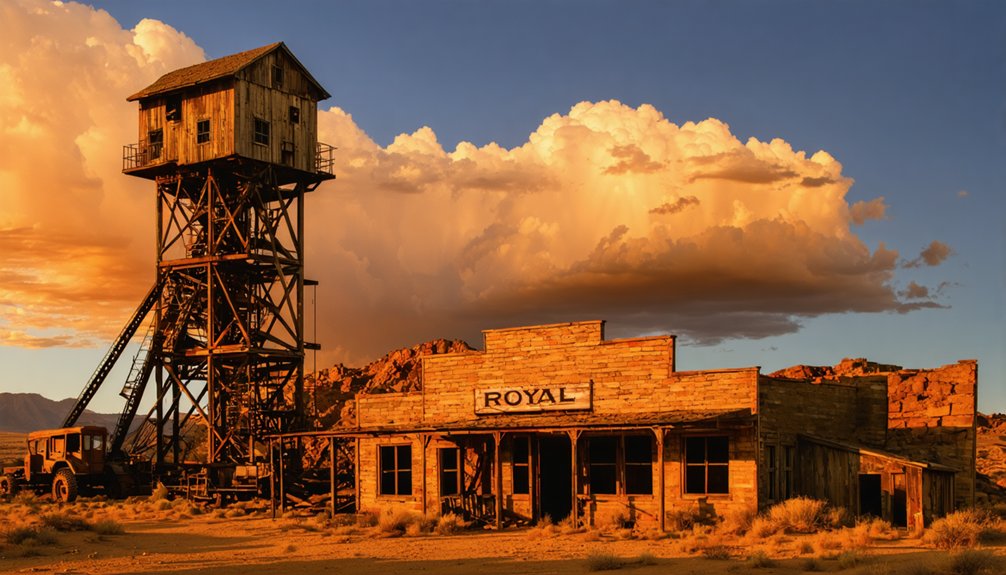
Beyond Royal’s physical remnants, its economic story centers on the powerful coal industry that dominated every aspect of life in this company town. The Royal Coal Company’s tight control over the town’s economic sustainability shaped everything from housing to retail, while workers labored in one of Utah’s deepest mines, producing an impressive 12,000 tons monthly by 1918.
You’ll find these key indicators of Royal’s peak mining operations:
- A diverse workforce of over 100 miners, including European and Asian immigrants
- Distribution networks extending to major markets in Ogden and Logan through the Royal Coal Sales Agency
- Company-controlled infrastructure supporting the miners’ daily lives, from housing to the company store
Despite the community’s resilience, Royal’s fortunes ultimately followed the boom-and-bust pattern typical of mining towns, declining as coal demand decreased in the 1920s and ’30s.
Decline and Abandonment of Royal
While Royal initially flourished under the Royal Coal Company’s management, frequent ownership changes between 1918-1919 marked the beginning of the town’s decline. The rapid shifts from Cameron to Rolapp to Royal reflected underlying instability in the mining operation’s management and investment.
Rapid ownership changes between 1918-1919 signaled Royal’s downfall, revealing deep instability in the mining operation’s leadership and finances.
You can trace Royal’s downfall to several factors: declining coal production despite the mine’s substantial depth, economic shifts in the post-World War I era, and increasing industry mechanization.
These changes triggered a chain reaction of population migration as residents sought better opportunities elsewhere. The town’s isolation and dependence on a single industry left it particularly vulnerable to market fluctuations and the broader impacts of the Great Depression.
Eventually, Royal succumbed to these pressures, leaving only stone walls and an abandoned miner’s dwelling as evidence of its coal mining legacy.
Exploring the Ghost Town Today
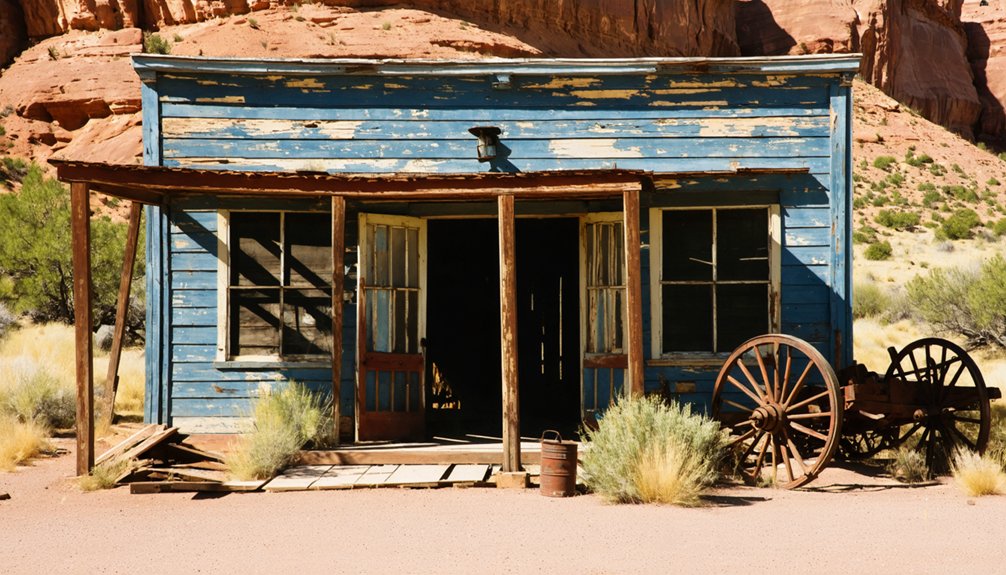
Today’s visitors to Royal encounter a haunting tableau of weathered stone walls and scattered ruins nestled within Price Canyon’s rugged terrain. Your ghost town exploration reveals the remnants of Utah’s coal mining heritage, including partial structures and visible mine entrances that tell stories of the past.
For the most rewarding experience, consider these vital aspects:
- Access requires personal transportation, as the remote location offers no visitor facilities.
- Photography opportunities abound, featuring historic mining ruins against dramatic canyon backdrops.
- Safety awareness is paramount, with unstable mine shafts and natural hazards requiring careful navigation.
The site’s historical significance remains largely unmarked, letting you discover Royal’s authentic character through self-guided exploration of its quiet, untouched landscape.
Exercise caution while walking among the foundations and fragments that mark this once-thriving mining community.
Frequently Asked Questions
What Safety Precautions Should Visitors Take When Exploring Royal’s Abandoned Mines?
Like moths to a deadly flame, don’t enter Royal’s mines. Stay on marked trails, heed “No Trespassing” signs, and follow visitor guidelines. Report unmarked openings to guarantee mine safety.
Are There Any Documented Paranormal Activities or Ghost Stories From Royal?
You won’t find credible ghost sightings or spectral legends from Royal in historical records. Unlike other Utah ghost towns with documented paranormal activity, Royal lacks verified supernatural tales or investigations.
What Artifacts From Royal Can Be Found in Utah Museums Today?
You won’t find significant Royal artifacts in Utah museum collections, as the site wasn’t extensively preserved. Unlike Silver Reef, few physical remnants were systematically collected for museum display.
Did Any Major Mining Accidents or Disasters Occur in Royal?
While historical records don’t show major mining accidents in Royal itself, you’ll find that nearby Carbon County saw devastating disasters, including Scofield and Castle Gate, which led to stricter mining regulations.
What Happened to the Residents After Royal Was Abandoned?
Like birds seeking new nests, you’ll find residents’ relocation scattered them to nearby active towns, with families pursuing fresh opportunities through mining, railroad work, or farming, adapting their lifestyles accordingly.
References
- https://en.wikipedia.org/wiki/Royal
- https://www.hmdb.org/m.asp?m=265335
- https://kids.kiddle.co/Royal
- https://www.utahlifemag.com/blog/post/4-ghost-towns
- https://utahstories.com/2021/09/exploring-ghost-towns-royal-cisco-near-moab-utah/
- https://historytogo.utah.gov/old-king-coal/
- https://www.uen.org/utah_history_encyclopedia/c/COAL_MINING_IN_UTAH.shtml
- https://utahrails.net/utahcoal/royal-coal.php
- https://utahrails.net/utahcoal/utahcoal-early.php
- https://jacobbarlow.com/2023/09/14/rolapp-royal/
